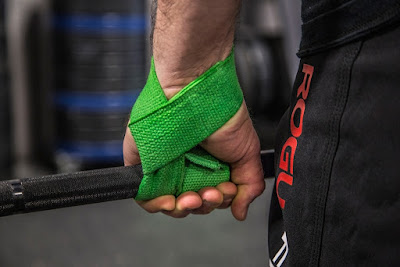LOOKS VS. LIFTS!
Unlike bodybuilders or physique competitors, aesthetics aren't the objective for weightlifters, Thus, the correct diet needs to promote recovery and provide the right foundation for the explosive power required to perform lifts to their maximum potential.
The importance of diet in sport has been recognized for many years, but there has been significant research into nutritional importance in resistance training since the turn of the millennium.
In 2003 Jeff S. Volek, a professor at the University of Connecticut, stated in the journal for Medicine & Science in Sports & Exercise that diet can ‘optimize adaptations to resistance training’ by providing key energy substrates at precise times and by altering the hormonal environment to favor anabolism (muscle synthesis/growth). In short, if you eat the right things, your body will work better. So how does this so called "diet" work?
PROTEIN POWER!
It has been a widely-held belief for some time that protein intake is essential for an athlete, but particularly in resistance training-based sports. A study published in a journal for the National Institute of Health suggests, "Significant increases in 1RM bench press and leg press were observed in all groups after 10 weeks. In this study, the combination of whey and casein protein promoted the greatest increases in fat-free mass after 10 weeks of heavy resistance training." So what is the amount you should be ingesting for optimal performance? According to the National Strength and Conditioning Association, a range of 1.5 to 2 grams per kilogram of body weight a day is optimal.Many athletes try to include a protein source with each meal – whether derived from pulses, whole grains, soy, beef, chicken, eggs, dairy or seafood. Any snacks in between meals should be rich in protein, which helps to repair muscle cells when broken down into amino acids. Whole grains and pulses, as well as green and some starchy vegetables such as sweet potato, are also excellent sources of complex carbohydrates, which will delay the onset of muscle fatigue – an essential step to prevent the body from burning useful sources of fuel, such as protein.
JUST AS YOUR LIFTS, TIMING IS EVERYTHING!
Interestingly, there is also evidence that consuming the right foods at different points of the day has an impact on training productivity. In a article released by the Journal of Nutrition, studies found "protein ingestion before sleep represents an effective dietary strategy to augment muscle mass and strength gains during resistance exercise training in young men." So consuming protein before bed will aid your recovery overnight.Consuming the right nutrients after a training session, though, is even more important according to a study released by Exercise Metabolism Research Group. McMaster University in Ontario, Canada, state that it is advantageous for athletes to consume fluid, carbohydrates and protein in the “post-exercise period… when re-hydration, refueling and repair of damaged tissues should occur.” Most of the day’s carbohydrates should be taken post-workout to aid in nutrient uptake and proper recovery. However, despite being the body’s main energy source, weightlifting does not require as many carbohydrates as endurance training. Energy is essential for weightlifting, and failing to consume sufficient calories will jeopardize any training sessions.
KNOW THE FATS!
Unsaturated rather than saturated fats should be consumed whenever possible. In a report by Medicine and Science in Sports and Exercise, athletes should consume between 20 and 35 per cent of total calorie intake from fats. Cooking with olive oil, rather than vegetable oils, is recommended by some weightlifting coaches as a source of good fats, as is avocado, fish oils and dark chocolate, to name a few other examples.WATER UNDER THE BRIDGE?
While protein/fat ratios or recommendations of which type of protein are a specified science unique to each individual, you must never underestimate water. Always ensure proper hydration! You need to drink enough to replace any fluids you lose, so you don't become dehydrated. As an athlete with a large amount of muscle mass, you should drink roughly two-thirds of your body weight in ounces each day, according to PBS.RULES CAN BE BROKEN
These are guidelines and not hard facts. Remember, every human body is different and there are no strict or unbreakable rules when it comes to YOUR diet! Many weightlifters will indulge in cheat meals every now and then – even those that are at the elite level. As long as you are feeling great and performing to your best abilities, feel free to experiment with these guidelines.Found this weeks article helpful? How will you implement the nutritional guidelines? Want to learn something specific next week? Leave me a comment or email me directly for more info!
Until next week...
Lift it overhead, slam it to the ground and repeat! Practice leads to progression... progression to Gold!

















